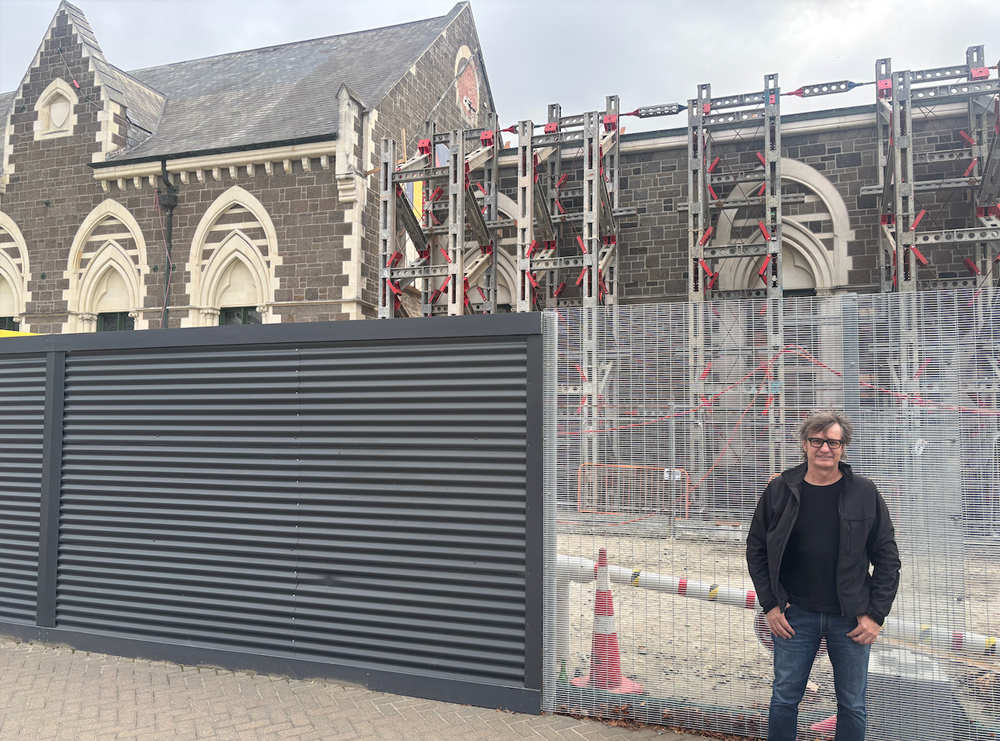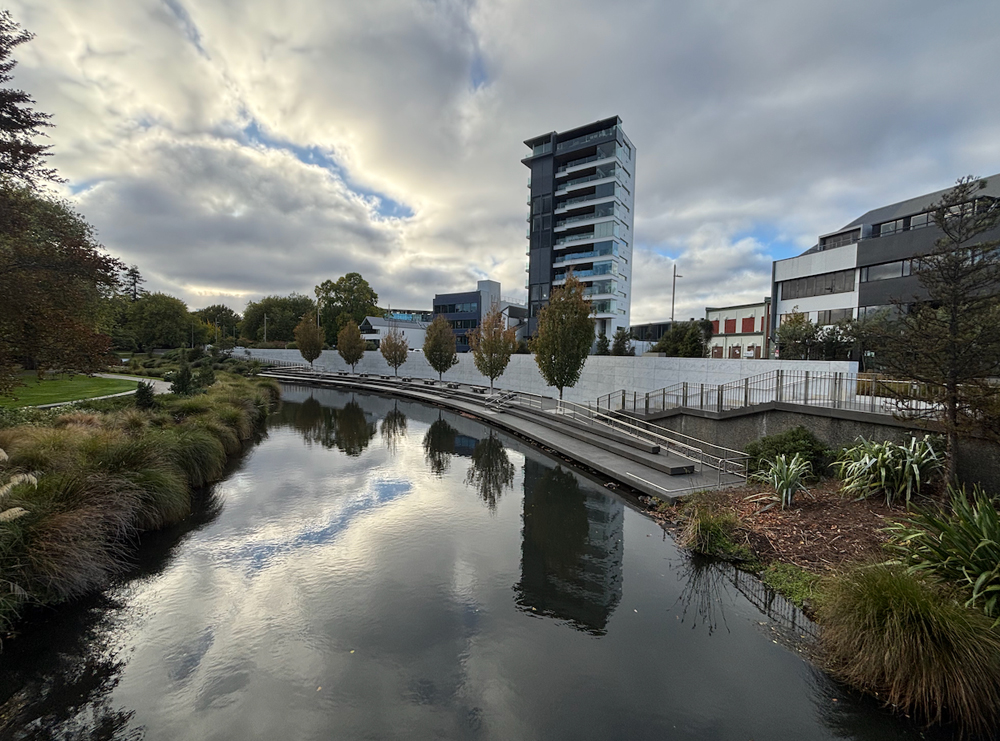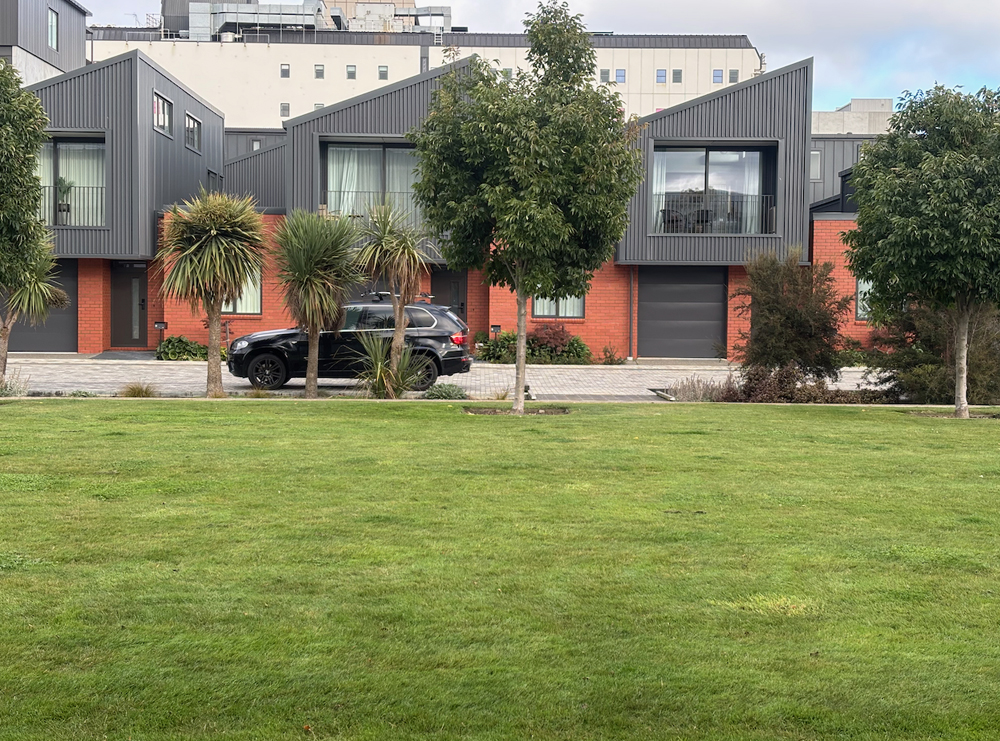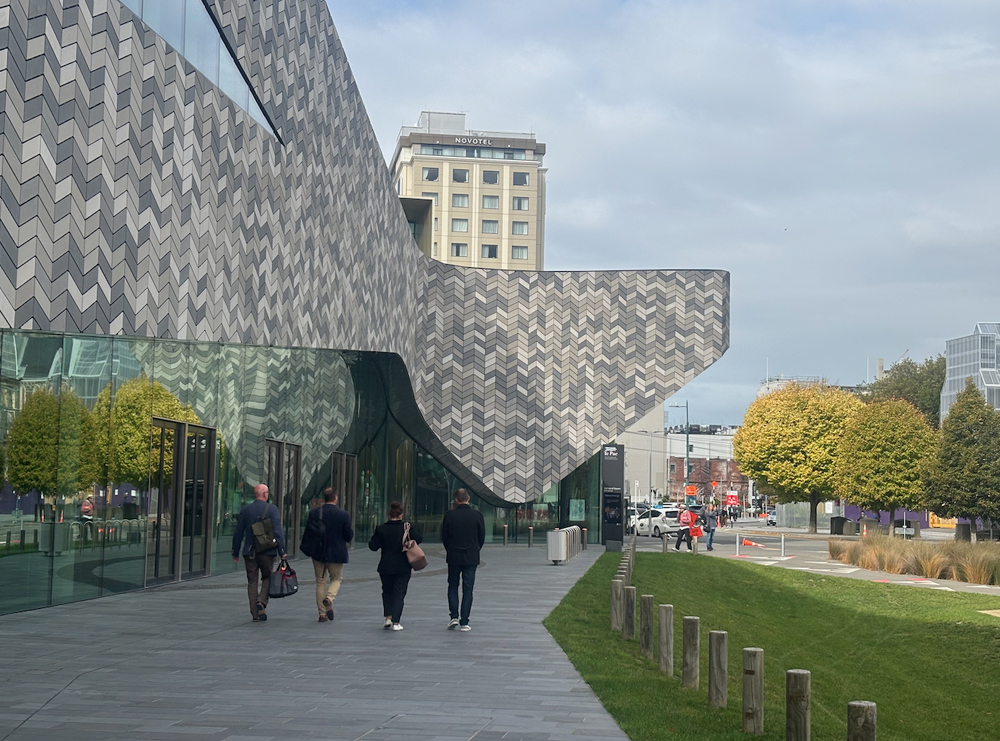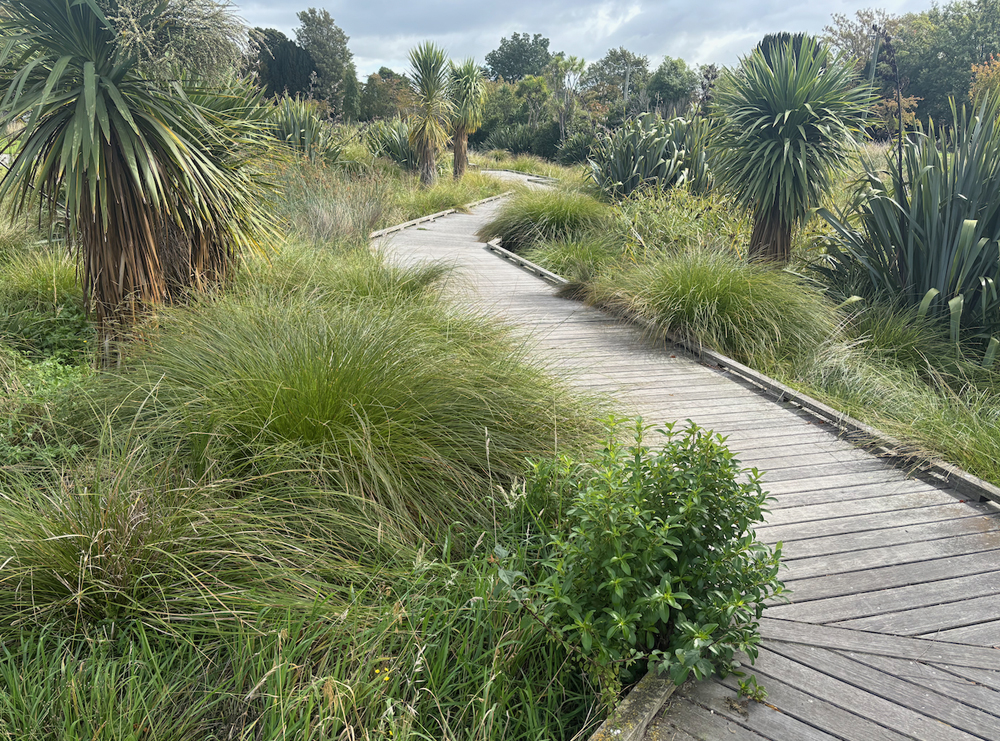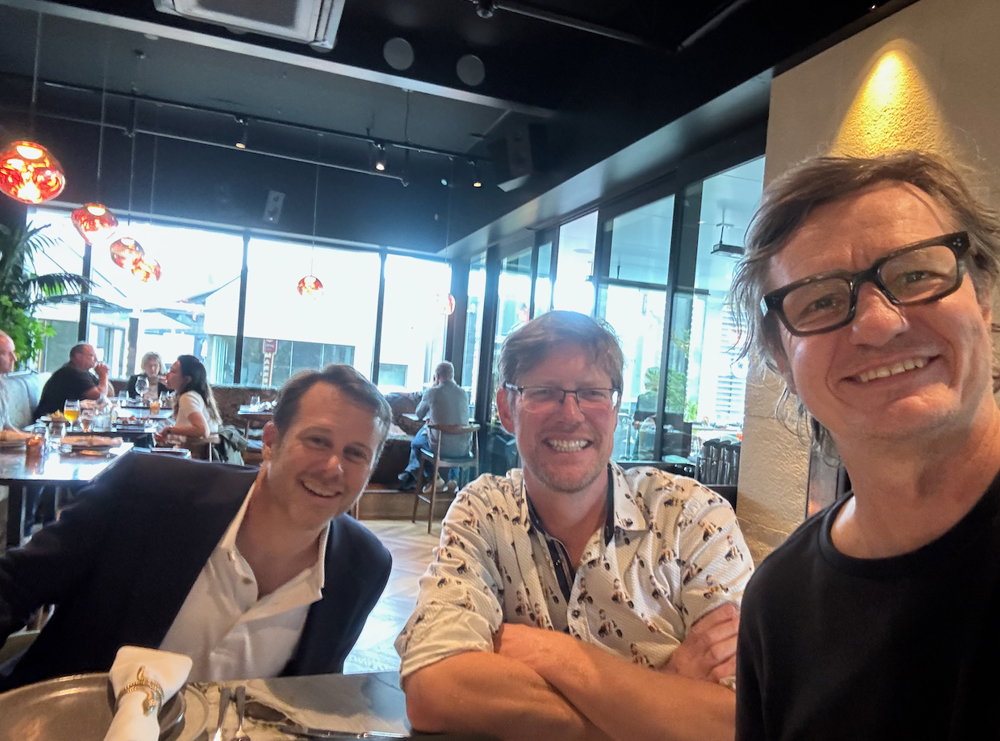
Practice Partner Cameron Davies recently visited New Zealand with community relocation expert Jamie Simmonds to attend the NZ Planning Institute Conference and to visit Otautahi Christchurch to review the process of recovery following two earthquakes in 2010 and 2011. Cameron and Jamie are currently working on the reconstruction of Lismore together, and the trip was a significant learning opportunity. In Otautahi Cameron and Jamie visited most of the CBD and met with Jonathan Boston, Peter Matthews, and Andrew Willis to discuss the post-earthquake disaster recovery and reflect on the learnings that came about from this process. Jonathan, Peter, and Andrew are all experts in their fields, with experience as follows:
- Jonathan Boston is a researcher with Victoria University of Wellington, who has a focus on the challenges of governance and economics in the face of climate change.
- Peter Matthews is Otakaro’s principal landscape architect and has led several recovery projects throughout the city.
- Andrew Willis led the team that developed Christchurch City Council’s Central City Recovery Plan planning framework and was active in delivering CERA’s recovery plan and blueprint.
